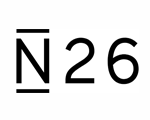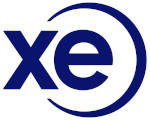Applying for a Mortgage Loan in the US
When you apply for a mortgage loan in the US, you will typically deal with an underwriter. Most underwriters work for banks, but you can also choose to work with a brokerage. Mortgage brokers don't provide loans directly, but have relationships with a number of lenders. Regardless of the type of underwriter you work with, you will typically be required to:
- submit to a credit check.
- verify your employment and income.
- list your places of residence over the past two years.
- document your savings, checking, and other financial account information.
- provide a copy of your purchase and sale agreement.
In some cases, you may not be required to provide all of that information. Some loans are referred to as low doc or no doc because they don't require you to prove any of the statements that you make to your underwriter. These loans are normally more expensive, but can be easier to obtain. Additionally, you can obtain a preauthorization before you submit an offer on a home you would like to buy. That can speed up the process, and also shows the seller that you are serious about the purchase.
Most mortgage loans in the US require a significant down payment. Traditional mortgages often call for down payments of 20 percent, but larger amounts are usually required for low doc and no doc loans. It's also possible to obtain 100 percent financing if you qualify for it.
Taking Advantage of a Competitive Marketplace
If you're interested in buying real estate in the US, the most important point to remember is that the mortgage lending market is extremely competitive. The overall interest rates are similar to those found in many European countries, but there is a lot of competition between different banks and brokers. That's why it's vital to shop around before you settle on a lender.
One of the easiest ways to obtain a mortgage loan is to work with your existing bank. If you already have a relationship with a bank in the US, the process of applying for a mortgage is relatively painless. However, you may find that your bank can't provide you with the best possible deal. It can pay off to speak with underwriters at different financial institutions. In addition to mortgage rates, you should also ask them about their origination fees and various closing costs and fees.
Mortgage brokers deal with many different lenders, so they can often find the best deals. However, it's sometimes less expensive to deal directly with a bank. When dealing with an underwriter at a mortgage brokerage, it's especially important to ask about the additional fees they charge.
Fixed Vs. Variable Mortgage Rates
Most loans in the US are fixed-rate mortgages . That means you're locked into a single mortgage rate for the entire duration of your loan. If interest rates drop, you'll have to refinance to take advantage of the situation. Variable-rate loans are available, but it's important to make sure you understand the terms of that type of mortgage.
Variable-rate loans are typically referred to as adjustable-rate mortgages (ARMs) in the US, and they are often available at lower interest rates than fixed-rate mortgages. However, the interest rate associated with an ARM can increase quite drastically. In exchange for a low initial rate, you assume the risk of any potential increase.
Building Equity
After you have obtained a mortgage loan, you will start to build equity in two different ways. A portion of each mortgage payment will go toward the principal, which decreases the amount you owe to your lender. You can also build equity if the value of the home increases. In either case, you can access that money through a special type of loan.
Home equity loans are also referred to as second mortgages because you use your equity as collateral. If you obtain a home equity term loan, you will receive a lump sum and will have to make a monthly payment. You can also apply for a home equity line of credit, which provides you with access to a revolving account. That allows you to withdraw and repay money over the course of a specific period of time.



